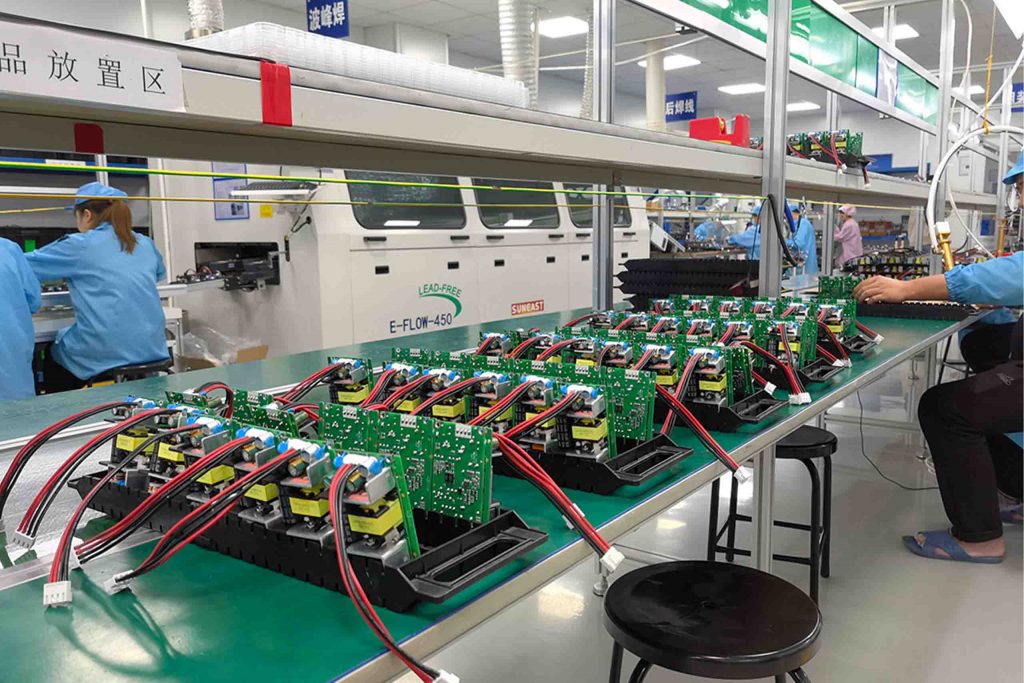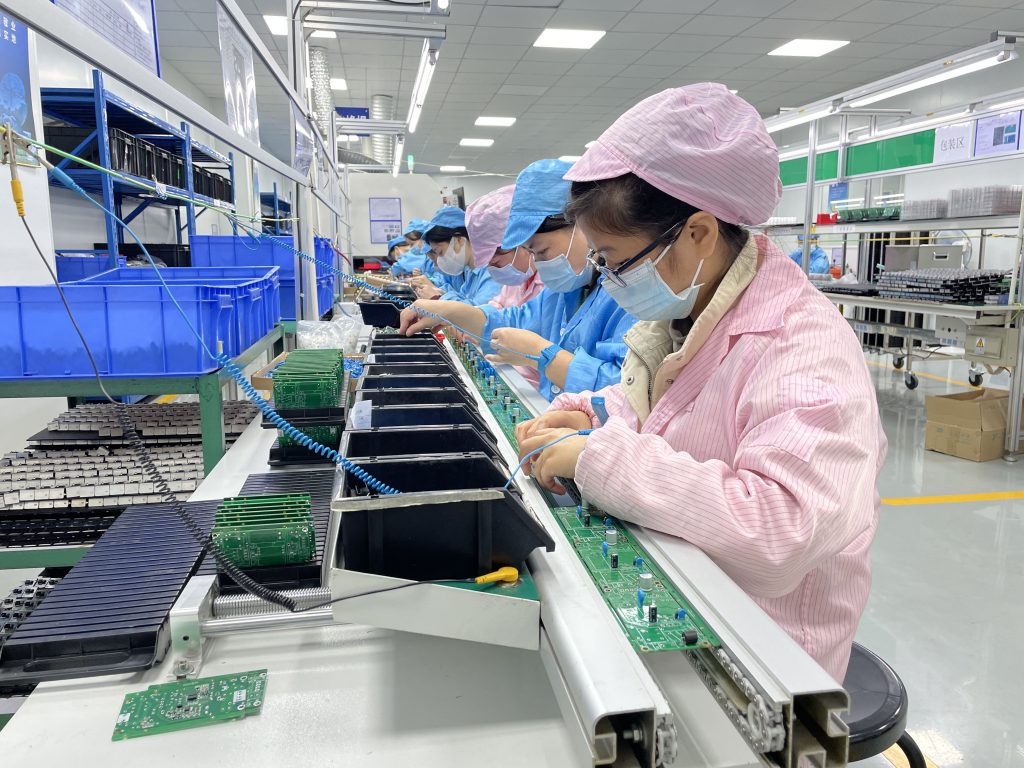KING FIELD ELECTRONIC CO., LTD
PCB/PCBA One-Stop Service Manufacturer
PCB/PCBA One-Stop Service Manufacturer

We have flexible production capabilities that support various batch sizes to meet different customer needs. Whether it's small-batch prototype production or large-scale manufacturing, we can quickly respond and adjust production plans to ensure timely delivery.
Our quality control system is very rigorous, ensuring that every DIP component undergoes comprehensive inspection before leaving the factory. This high standard of quality control ensures product reliability and consistency, allowing customers to trust our products and reducing potential risks.


Our technical team has extensive experience in DIP assembly, possessing professional technical skills and industry knowledge. Team members can effectively identify issues during the production process and take prompt action, ensuring professionalism and efficiency at every stage, thereby enhancing overall production efficiency.
We are capable of handling various types of DIP components, including large and specially shaped elements. This diverse component support enables us to meet different product design and functionality requirements, ensuring customer flexibility during the development and production processes.

| Assembly Types | ● SMT Assembly( with AOI inspection); ● BGA Assembly(with X-Ray inspection); ● Through-hole Assembly; ● SMT & Through-hole Mixed Assembly; ● Kit Assembly |
| Quality Inspection | ● AOI Inspection; ● X-Ray Inspection; ● Voltage Test; ● Chip Programming; ● ICT Test; Functional Test |
| PCB Types | Rigid PCB、Metal core PCB、Flex PCB、Rigid-Flex PCB |
| Component Types | ● Passives, smallest size 0201(inch) ● Fine-pitch chips to 0.38mm ● BGA (0.2mm pitch), FPGA, LGA, DFN,QFN with X-Ray testing ● Connectors and terminals |
| Components Sourcing | ● Full turnkey (All components sourced by Yingstar); ● Partial turnkey; ● Kitted/Consigned |
| Solder Types | Leaded; Lead-Free(Rohs);Water soluble solder paste |
| Order quantity | ● 5pcs to 100,000pcs; ● From Prototypes to Mass Production |
| Assembly Lead Time | From 8 hours to 72 hours when parts are ready |
| Files Required for | ● Gerber RS-274X, 274D, or PCB Design file |
| Quote and Production | ● BOM (Bill of Materials, .xls, xlsx) |
| ● Pick-N-Place file / XY file (for production only) |
At KING FIELD, we specialize in providing comprehensive through hole PCB assembly services, ensuring seamless integration from prototype development to full-scale production. Our commitment to quality is supported by state-of-the-art technology solutions that enable us to deliver exceptional results at every stage. We offer a complete range of capabilities for through hole PCB assembly, including conformal coating, PCB encapsulation, RoHS compliance, labeling, functional testing, device programming, and surface finishing, all adhering to stringent international quality standards.
Our team consists of highly trained professionals with extensive experience in both manual and automated assembly techniques. We specialize in precise hand soldering of components and efficient automated insertion processes for axial and radial components. Whether handling complex assemblies that require meticulous attention to detail or fulfilling small-volume production requirements with automated efficiency, we ensure that every project meets the highest standards of quality and reliability. KING FIELD is your trusted partner for superior through hole PCB assembly services, tailored to meet your specific needs and exceed your expectations.

THT (Through-Hole Technology) assembly is a traditional electronic component assembly technology in which the pins of electronic components pass through pre-drilled holes in the printed circuit board (PCB) and are soldered on the other side of the board. Although surface mount technology (SMT) is becoming more and more popular in electronic assembly, it is important not to overlook the importance of through-hole PCB assembly. Although about 70% of components are mounted on the PCB surface via SMT, DIP components still require THT technology. THT assembly is suitable for application scenarios that require higher mechanical strength and reliability, such as industrial equipment and large power supplies.
Yes, as per the client requirements, we are well equipped to offer first article inspection for through hole PCBs.
DIP (Dual In-line Package) and THT (Through-Hole Technology) are both important terms in the field of electronic component packaging and PCB assembly.
DIP, also known as Dual In-line Package or DIL Package, refers to a specific type of electronic component packaging that features two parallel rows of pins or leads extending from the bottom of the package. DIP package is widely used in electronic assemblies due to their compact size and ease of insertion into PCBs.
THT, on the other hand, stands for Through-Hole Technology. It refers to the manufacturing process that involves drilling holes on a PCB and inserting component leads or pins through these holes. The components are then soldered on the opposite side of the PCB to establish electrical connections.
While DIP is commonly associated with the type of component package used in PCB assembly, THT is the manufacturing process that involves the insertion and soldering of components through holes.
SMT is a widely adopted electronic assembly technology that utilizes SMD components and automated placement machines for the assembly process. This technology offers several advantages, including enhanced processing efficiency and reduced form factor of electronic applications.
On the other hand, THT is more challenging to automate and involves the use of larger components. THT offers the advantage of providing a stronger and more robust connection due to the through-hole soldering technique. It is particularly suitable for components that require additional mechanical support or for applications where durability and reliability are critical.
Well, whether to select through hole PCB assembly or SMT PCB assembly; it totally depends on your requirements. Most of the integrated circuits go for SMT package. However, for connectors, switches, or mechanical power parts, the standard way is to use through hole parts.
Yes, as per the client requirements, we are well equipped to offer first article inspection for through hole PCBs.
DIP (Dual In-line Package) and THT (Through-Hole Technology) are both important terms in the field of electronic component packaging and PCB assembly.
DIP, also known as Dual In-line Package or DIL Package, refers to a specific type of electronic component packaging that features two parallel rows of pins or leads extending from the bottom of the package. DIP package is widely used in electronic assemblies due to their compact size and ease of insertion into PCBs.
THT, on the other hand, stands for Through-Hole Technology. It refers to the manufacturing process that involves drilling holes on a PCB and inserting component leads or pins through these holes. The components are then soldered on the opposite side of the PCB to establish electrical connections.
While DIP is commonly associated with the type of component package used in PCB assembly, THT is the manufacturing process that involves the insertion and soldering of components through holes.
SMT is a widely adopted electronic assembly technology that utilizes SMD components and automated placement machines for the assembly process. This technology offers several advantages, including enhanced processing efficiency and reduced form factor of electronic applications.
On the other hand, THT is more challenging to automate and involves the use of larger components. THT offers the advantage of providing a stronger and more robust connection due to the through-hole soldering technique. It is particularly suitable for components that require additional mechanical support or for applications where durability and reliability are critical.
Well, whether to select through hole PCB assembly or SMT PCB assembly; it totally depends on your requirements. Most of the integrated circuits go for SMT package. However, for connectors, switches, or mechanical power parts, the standard way is to use through hole parts.










